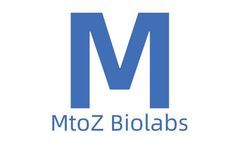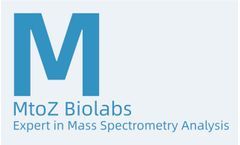Biomedical Research Articles & Analysis: Older
59 articles found
Stable cell lines are an indispensable tool in the realm of biomedical research, playing a crucial role in advancing our understanding of cellular processes and disease mechanisms. ...
Gene editing has emerged as a transformative tool in the field of biomedical science, with significant implications for the treatment of various diseases. ...
Their ability to form tight junctions enhances their relevance in studies focused on barrier function and permeability. Applications in Research HCEC-12 has been instrumental in advancing our understanding of several key areas in ocular research. ...
Accurate determination of collagen content is very important for biomedical research, disease diagnosis and quality control of related products. ...
Therefore, the detection of sialic acid proteins holds significant value in disease diagnosis, biomedical research and drug development.Biological Importance of Sialic Acid ProteinsSialic acid proteins play an indispensable role in many physiological and pathological processes. ...
In biomedical research, the detection and analysis of biomarkers are crucial. ...
Boxcab Antibody Sequencing is an important experimental method commonly used in studying cellular and protein responses. In biomedical research, antibodies are a powerful tool used in the detection and quantification of target antigens. ...
Subsequently, through a series of purification and treatment steps, pure recombinant Type III collagen for research or commercial purposes can be obtained.Recombinant technology allows scientists to produce collagen under laboratory conditions without having to rely on extraction from animals or humans.Analysis Workflow1. ...
DIA technology has a wide range of applications in biomedical research, disease biomarker discovery, and drug development.DIA Proteomics SequencingDIA technology systematically scans the entire mass range during mass spectrometry analysis, rather than analyzing only a few preselected ions. ...
It is also an important field in biomedical research, and interventions in the ubiquitination process may provide new strategies for treating various ...
Metabolomics Research Methods Metabolomics collects samples through established metabolomics research methods, and subsequently uses techniques to obtain metabolites, determine whether there are statistical differences in metabolites between groups and perform further analysis. There are two types of metabolomics research methods: untargeted ...
This is the promise of fluorescent biopolymers, a revolutionary new class of materials that could transform the field of biomedical research. What Are Fluorescent Biopolymers? At their core, biopolymers are simply long chains of naturally-occurring biomolecules like proteins, peptides, and nucleic acids. ...
ByMatexcel
Fluorometric and colorimetric assays are available to quantify caspase activity, allowing researchers to investigate the role of specific caspases and their inhibitors. Applications in Drug discovery and Cancer Research Apoptosis assays have been pivotal in drug discovery and development, particularly in identifying compounds with potential anticancer ...
This article explores the diverse applications of copper-free click chemistry in biomedical research, highlighting its potential for clickable drug surrogates, labeling cellular membrane lipids and proteins, in vivo imaging, and in vivo drug delivery. ...
This article delves deep into the concept of reporter lentiviral particles and their remarkable contribution to biomedical research. What are Lentiviral Particles? Derived from the Lentivirus genus, lentiviral particles are a type of retrovirus renowned for their ability to integrate their genetic material into the host cell's genome. ...
Recombinase Adeno-Associated Virus (rAAV) particles have taken the center-stage in gene therapy research and development due to their exceptional genetic manipulation capabilities, safety and unprecedented therapeutic success. As biomedical science advances, there is an ever-increasing enthusiasm in the usage of rAAV particles as effective vehicles for gene ...
Differences in Application Areas Micelles: Micelles are commonly used in cosmetics, drug delivery systems, and biochemical research. They are suitable for applications requiring rapid release of drugs or active ingredients. Liposomes: Liposomes are widely used in areas such as drug delivery, biomedical research, and cosmetics, especially those ...
Liposome-Based LipoSM-PROTAC However, the low drug efficacy of peptide-based SM-PROTACs hindered their further development in the biomedical field. Therefore, there was a pressing need for a more effective PROTAC nanoplatform for biomedical applications. Due to the ease of formulation, self-assembly, and high load-carrying capacity of liposomes, ...
These aren't fireflies, they're fluorescent liposomes, a cutting-edge tool in the world of drug delivery and biomedical research. What are liposomes? Liposomes are microscopic bubbles made from phospholipids, the same fatty molecules that make up cell membranes. ...
However, preclinical animal models have emerged as invaluable resources for advancing research and unraveling the mysteries surrounding rare diseases. Animal models play a critical role in biomedical research, as they allow scientists to study complex disease processes, develop new therapies, and test their safety and efficacy before moving ...

















